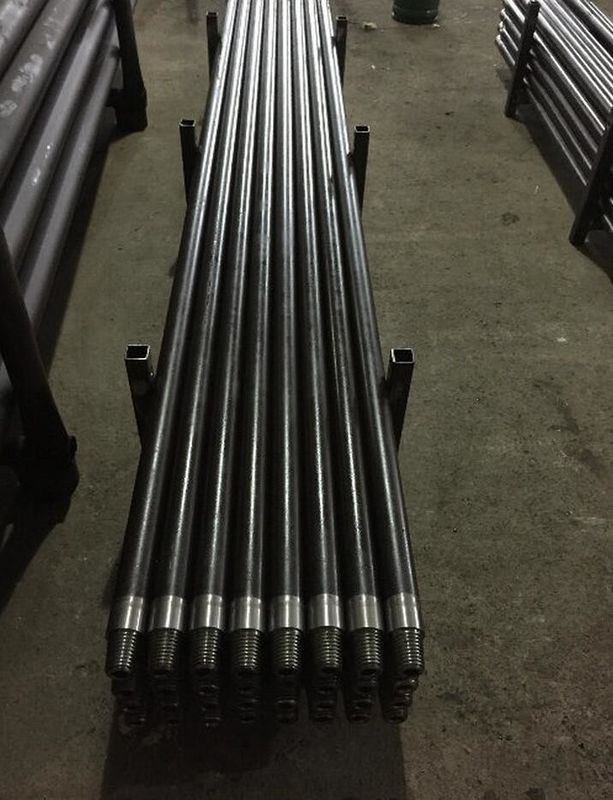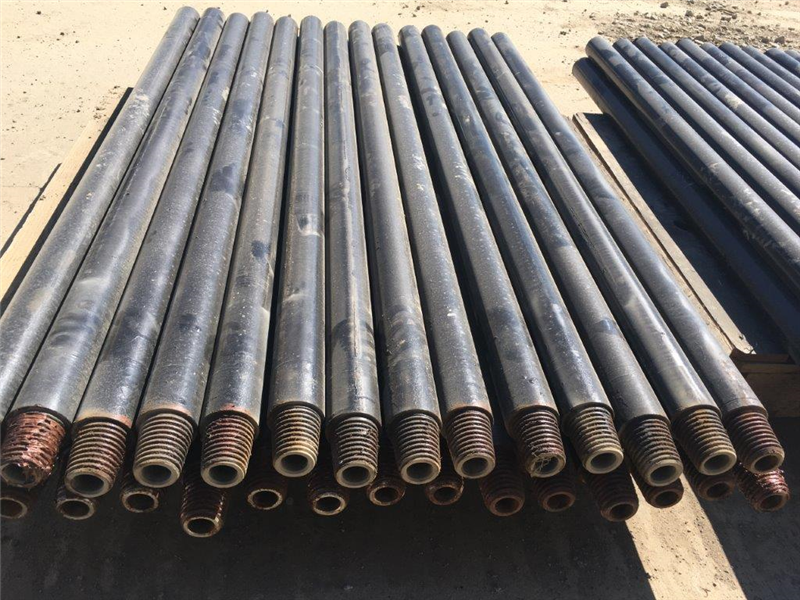DRILL PIPE HEAVY WEIGHT CHART
DRILL PIPE HEAVY WEIGHT CHART
Drill pipe heavy weight is a type of drill pipe with thickened walls and longer collars compared to the standard drill pipe. This provides the heavy weight drill pipe (HWDP) with higher tensile strength. To facilitate greater support, HDWP is positioned near the topmost part of a long drill string.
Drill Pipe Heavy Weight Specifications
Drill pipe heavy weight usually functions as a transitional part from a heavy drill collar to comparatively lightweight drill pipe. The wall of an intermediate HDWP measures about one-inch-thick, beneficial in the inhibition of stress concentration at the upper portion of drill collars. Higher RPM drilling with lessened torque and differential pressure sticking is possible with the use of heavy weight drill pipe.
A wear pad or unique middle upset can be seen in HDWP, allowing the tube to stay away from the hole wall, resulting in the decrease in hole drag and differential sticking glitches.
Drill Pipe Heavy Weight Benefits
Directional drilling is best applied with a heavy weight drill pipe. Directional control is made easy with reduced connection fatigue issues generic to horizontal or high-angle drilling, all credits to the ability of HWDP to bend easily.
Highly sturdy heavy weight drill pipe is commonly utilized in the hole of extended reach and horizontal well to pull on the bit, more particularly in wells where there is a low ratio between the measured depth ratio and the total vertical depth.
Different combinations of drill pipe with heavy weight, drill collars, and conventional drill string gear can be established to keep up with the intensity of the drilling conditions.
Drill Pipe Heavy Weight Chart
| DTH DrillPipes | |||||||
| Thread for Pipe | Thread for Pipe | DIA | Wall | Length | Flat | ||
| Male(pin) | FeMale(Box) | (MM) | Thickness | (MM) | (MM) | ||
| 2 3/8 API REG | 2 3/8 API REG | 76 | 4 | 3000 | YES | ||
| 2 3/8 API REG | 2 3/8 API REG | 89 | 4 | 3000 | YES | ||
| 2 3/8 API REG | 2 3/8 API REG | 76 | 6.3 | 4000 | YES | ||
| 2 3/8 API REG | 2 3/8 API REG | 89 | 6.3 | 5000 | YES | ||
| 2 3/8 API IF | 2 3/8 API IF | 89 | 4 | 3000 | YES | ||
| 2 7/8 API REG | 2 7/8 API REG | 102 | 6.3 | 5000 | YES | ||
| 2 7/8 API IF | 2 7/8 API IF | 114 | 6.3 | 5000 | YES | ||
| 3 1/2 API REG | 3 1/2 API REG | 114 | 6.3 | 5000 | YES | ||
| 3 1/2 API REG | 3 1/2 API REG | 127 | 6.3 | 6000 | YES | ||
| 2 3/8 API REG | 2 3/8 API REG | 73 | 5.16 | 3000 | YES | ||
| 5D KOREAN | 5D KOREAN | 73 | 5.16 | 1500 | YES | ||
| 5D KOREAN | 5D KOREAN | 73 | 5.5 | 3000 | YES | ||
| 7D KOREAN | 7D KOREAN | 73 | 5.5 | 1500 | YES | ||
| 2 3/8 API REG | 2 3/8 API REG | 73 | 5.16 | 2000 | YES | ||
| 5D KOREAN | 5D KOREAN | 60.5 | 5.5 | 3000 | YES | ||
| 7D KOREAN | 7D KOREAN | 60.5 | 5.5 | 1500 | YES | ||
Drill Pipe Heavy Weight – Terms and Definitions
A Heavy weight drill pipe is the oil and gas industry’s choice for operations of intermediate weight drill stem. It has different dimensions following the requirements set, similar with the standard drill pipe.
Nominal Size – The nominal size of HWDP is about the same as the inside diameter of those with less than 14” actual inside diameter measurement and is equal to the outside diameter of those with larger than 14”.
Nominal Tube Dimensions – This is composed of the inside diameter (ID) and wall thickness, which are two of the three dimensions of a round tube section.
Tool Joint – Tool joint refers to the connection within the piping system. It is the location of pipe connections, valves, and fittings.
Make-up Torque – This refers to the movement required to facilitate pipe rotation.
Capacity – It is the volume of fluid that can be enclosed within the pipe.
Displacement – The volume of fluid to be displaced–if positioned into fluid open ended–in order to be filled inside is the displacement for open-ended HWDP pipe.
The volume of fluid to be displaced if positioned into fluid having the lower portion closed–to prevent fluid from going inside–is the displacement for closed-ended pipe.
Drill Pipe Heavy Weight Chart Abbreviations:
ID – Inside Diameter
OD – Outside Diameter
in -inch
lb/ft – pound per foot
bbl/ft – barrel per feet
Jts – joints
Torq – Torque
Nom.Size – Nominal Size
Wall Thkns – Wall Thickness
TJ Conn Size – Tool Joint Connection Size
Go here if you are looking for the Drill Pipe Specification with Upset and Tool Joint Chart.






